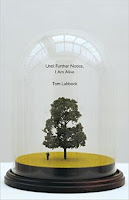It is not often that we have both patient and caregiver as extraordinary writers. And while often sad and hard stories we learn so much by being able to see both sides of a cancer story. Even a story unto death.
This month I read a pair of memoirs that give us this perspective and some new language and eyes into a cancer patient and cancer caregiver with books by Tom Lubbock who was Chief Art Critic for London’s Independent newspaper. Tom was diagnosed with brain cancer in 2008 and died in 2011. His book, the chronicle of those three years until days before he
died, is “Until Further Notice, I am Alive.”
His wife, the artist and writer, Marion Coutts, wrote her book, “The Iceberg” through and after that same time period. Hers is the parallel story of the diagnosis, surgeries, hospitalizations and, for both of them, the heartbreaking complication of raising their baby son, Eugene.
What many of us who love words, reading, books, and arguing our point is the injustice and indignity of Tom’s particular cancer which was situated in the language center of his brain. The wonder and strange thrill of his book is reading him as he is articulating what language means and what it means when a writer is losing language. You would think: “too morbid”. But no.
These books, Tom’s and Marion’s, are slim and carefully crafted. These two are such fine
writers so I encourage you to read both, together and side by side. Do you see how each one describes the same day? What does it look like to him? To her? How they see the world includes what they see, as they see each other, even how they see death.
From Marion: “A palliative nurse came to see us at home in the autumn of 2010. She said, ‘On a scale of one to seven, how would you rate your quality of life?’ There was a long pause while we digested this madness. Tom, slightly absent, lightly bored, said thoughtfully, ‘That’s a ridiculous question. Obviously we go—“Oh God” all the time, at all the stuff to be done. But generally it is wonderful. We are interested.”
From Tom: “Mortal. We occupy a limited patch of space for a limited patch of time. Like the art of realistic paintings: pictures hold an equivalent in the confined areas which they enframe, and the brief narratives they represent…We know the deal. We’re bodies. We are not in our own hands.”
Marion’s life continues. Tom’s life does not. But these books do. And what they “enframe” for us is wisdom, self-compassion and love. And this thing that we all do until death—we try to put life into words.


No comments:
Post a Comment